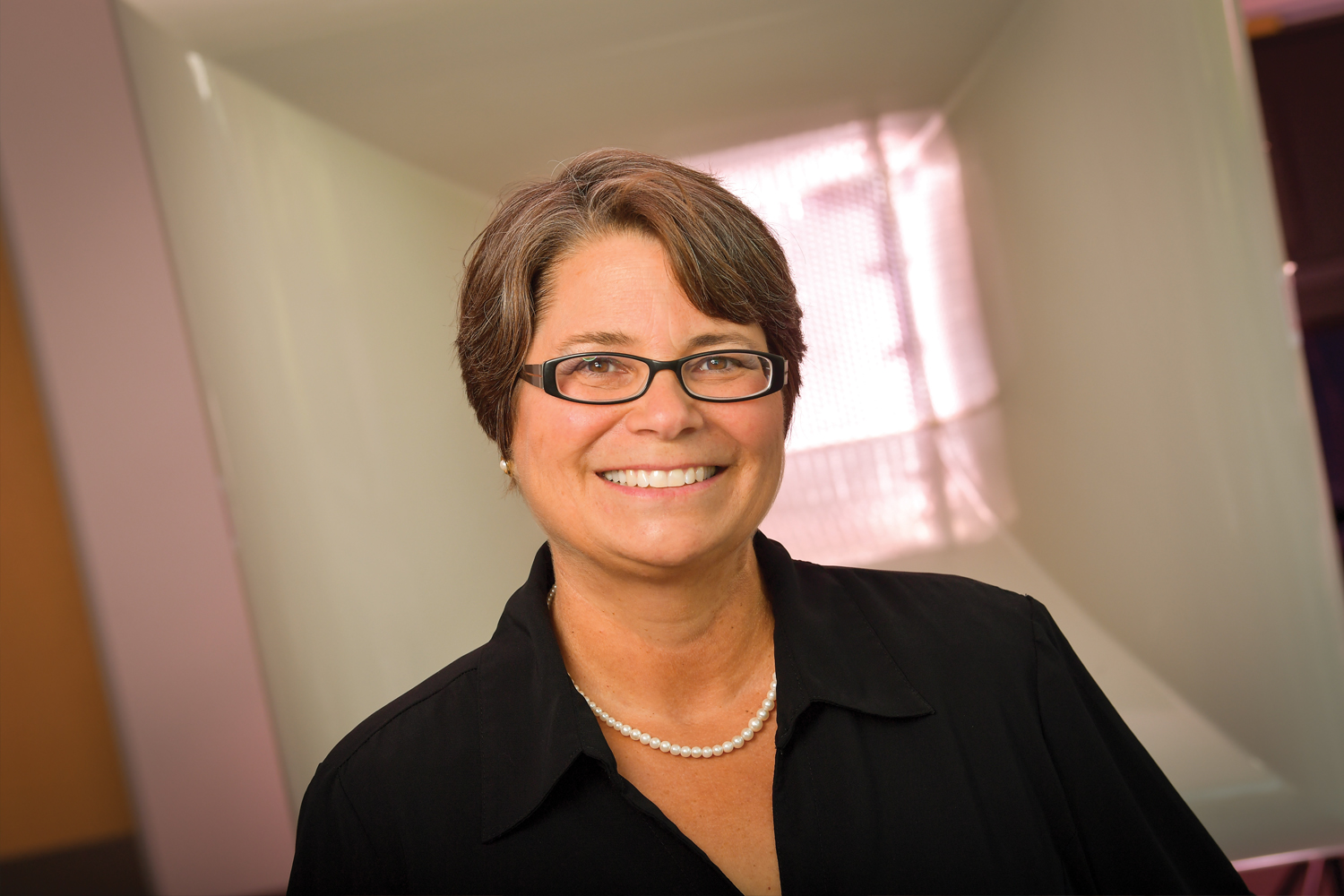Christina Bloebaum, PhD, joined Kent State University’s College of Aeronautics and Engineering as its new dean in August, 2018. Dr. Bloebaum comes to Kent State from her previous position as interim department chair of aerospace engineering and the Dennis and Rebecca Muilenburg Professor for Aerospace Engineering at Iowa State University.
What drew her to Kent State, she says, was “the tremendous opportunity to continue the growth path of the college across aeronautics, applied engineering and engineering programs—all of which are important areas for present and future work development in the United States and the world.” That includes growing the college’s graduate and research programs.
Dr. Bloebaum is no stranger to creating and growing programs. While a program director with the National Science Foundation (NSF) from 2009–2012, she and two associates proposed a new idea for an NSF program that funds research on the cutting-edge of science and engineering. Their idea, focused on reducing parts in manufacturing, was to explore the centuries-old tradition of origami—folding two-dimensional paper into three-dimensional shapes—to see if it could be applied to engineering, biology and medicine.
The new program, Origami Design for Integration of Self-assembling Systems for Engineering Innovation, was so successful that in 2012-2013 it awarded nearly $30 million to 15 projects that explored new paths of technology inspired by origami.
A 2017 NOVA documentary on PBS, The Origami Revolution, profiled a number of those research projects, showing how engineers are using origami to design drugs, micro-robots, and future NASA space missions.
We asked Dr. Bloebaum to unfold a few facts about herself and her future vision.
First job: I started babysitting when I was 11, but at 14 I became a bagger at the local grocery store.
Recent read: I just finished reading the John Grisham novel, The Rooster Bar.
Happy place: Any relatively empty beach with a pool close by.
Advice to my younger self: Never be afraid to fail.
On the radar for the field of aerospace engineering: Designing a modern complex aerospace system—such as what will be required for Mission to Mars and the NextGen air transportation system—on budget, on time and with minimal unintended consequences.
Challenges as dean: Ramping up fast enough to put in place the necessary pieces to grow the college. The College of Aeronautics and Engineering has a wonderful story to tell. A huge challenge is to tell it to prospective students, parents, industry partners, research partners and funding agencies in a way that captures the college’s capabilities and unique potential.
—Susan Menassa
